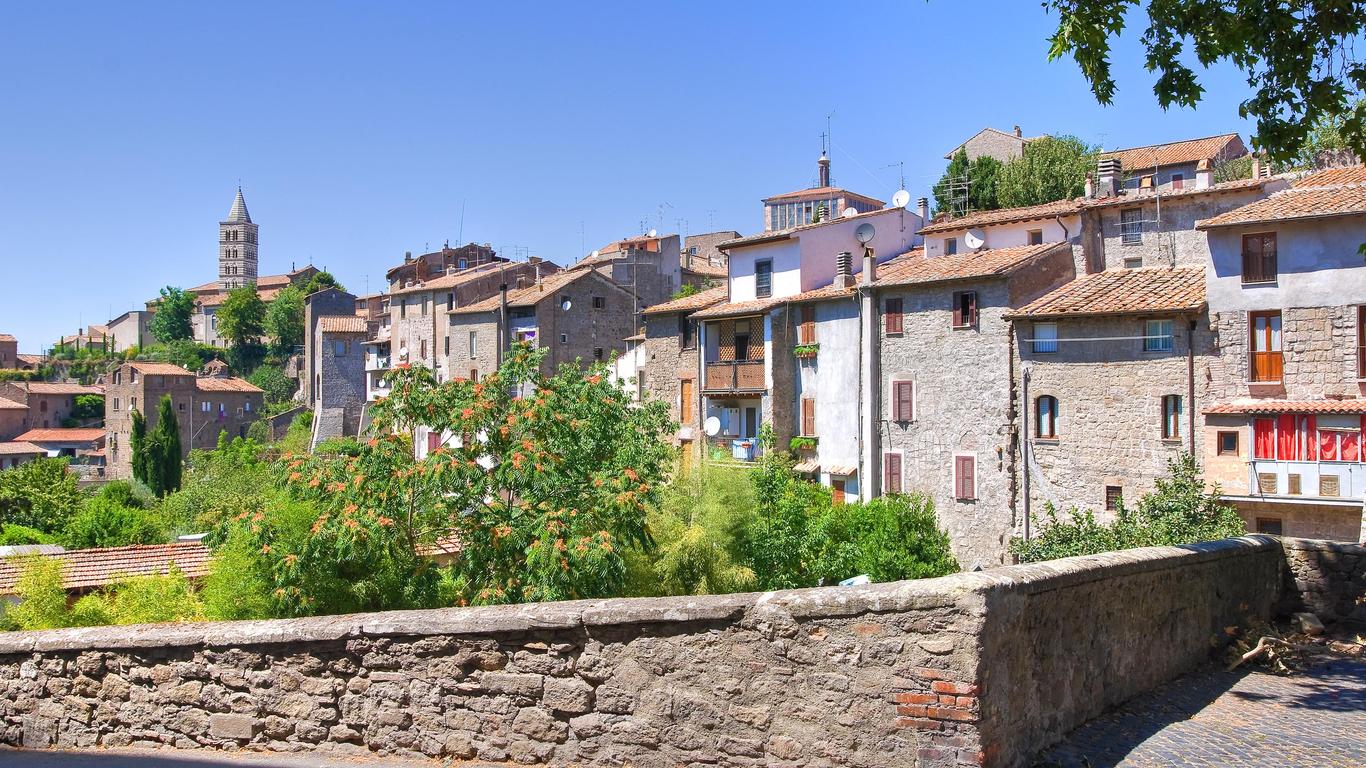Ringed by medieval walls, Viterbo is a centuries-old Italian city famed for its papal palace. It lies on the doorstep of Europe’s largest volcanic lake and is watched over by the peaks of Monti Cimini and Monti Volsini. Viterbo centres around an atmospheric historic core and is surrounded by thermal springs that have been used since pre-Roman times.
Things to do in Viterbo
Stroll through the historic centre of Viterbo to admire its beautifully preserved buildings, many of which are built atop ancient ruins. Dominating the central square is the Palazzo Comunale with its 17th-century frescoes by Italian Baroque artists. In the San Pellegrino quarter, take note of the medieval houses built with profferli (external staircases), which are unique to the town.
Viterbo’s most famous building is the Palazzo dei Papi, which was home to the papacy between 1257 and 1281. Overlooking the Piazza di San Lorenzo, it is renowned for its ornamental loggia and features columns built using stone repurposed from a Roman temple. Adjacent is the Duomo di Viterbo, an impressive Romanesque cathedral with a Sienese-inspired belfry. Artwork by Giovanni Francesco Romanelli and Gerolamo da Cremona adorn the interior.
After a busy day sightseeing, you can relax in the Terme dei Papi, an attractive bathing complex with indoor and outdoor pools. For a more rural experience, Viterbo is surrounded by thermal springs whose therapeutic properties have been harnessed since Etruscan times. Of particular note are the Bulicame and Bagnaccio thermal parks.
Getting around Viterbo
Viterbo is just over an hour’s drive from Rome and 1.5 hours from Leonardo da Vinci International Airport, which has flights to destinations across the globe. Regular trains connect to the Viterbo railway station and buses travel throughout the city. The historic centre of Viterbo is ideally explored on foot.





